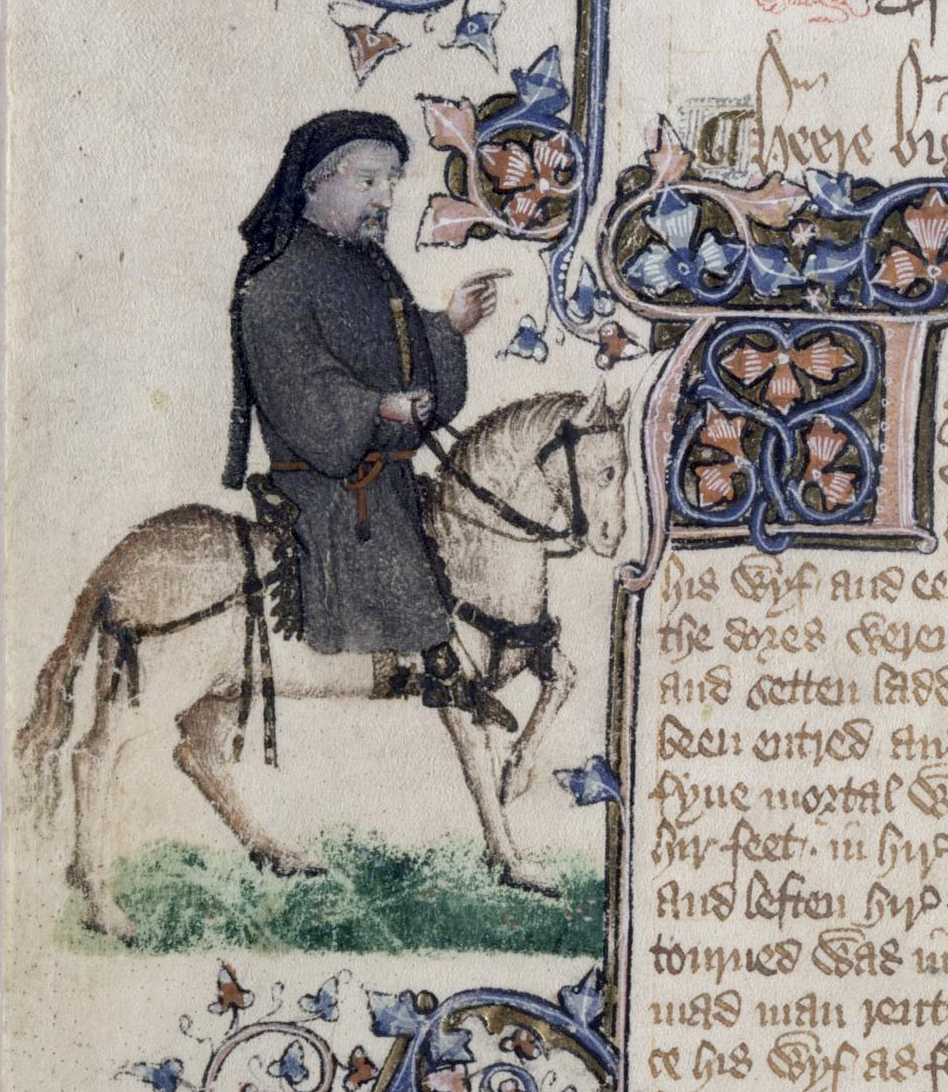 |
| Chaucer as a pilgrim from Ellesmere Manuscript, Early Edition of "The Canterbury Tales" Source: Wikimedia Commons |
Peter Barry describes the terms involved in the study of narratology. Narratology is comprised of many elements culminating in great storytelling, some of which both Dante and Chaucer use in The Miller’s Tale and Vita Nuova.
For example, Barry writes about the use of time in a story. Every story has a beginning, middle, and end, but, as Barry puts it, “stories tend to begin in the middle,” (235). That is not to say that stories to not have flash-backs, or even fast-forwards, but to begin at the true beginning of a story can be (at times) boring. The literary term for flash-back is analeptic, with a flash-forward being proleptic. Geoffry Chaucer’s The Miller’s Tale seems to begin in the middle; a drunken miller begins to tell the story of the jealous carpenter and his wife. The reader only knows this because the narrator sets up the backstory first, in analeptic fashion.
In the same way, the basic narrative mode of The Miller’s Tale is both diegetic and mimetic. Diegetic is when part of the story is summarized in a few sentences, while mimetic is the opposite. Mimetic storytelling is full of detail and conversation. The beginning of Vita Nuova is most certainly mimetic because of the detail in which the narrator describes the meeting of his love, Beatrice: “She appeared dressed in noblest colour, restrained and pure, in crimson, tied and adorned in the style that then suited her very tender age,” (Dante 5). Section 2 of Vita Nuova is proleptic because the narrator fast-forwards nine years later after meeting the girl of his dreams.
Works Cited
Barry, Peter. Beginning Theory. England: Manchester University Press. 2009. Print.
Alighier, Dante. Vita Nuova. 1295. Web.
